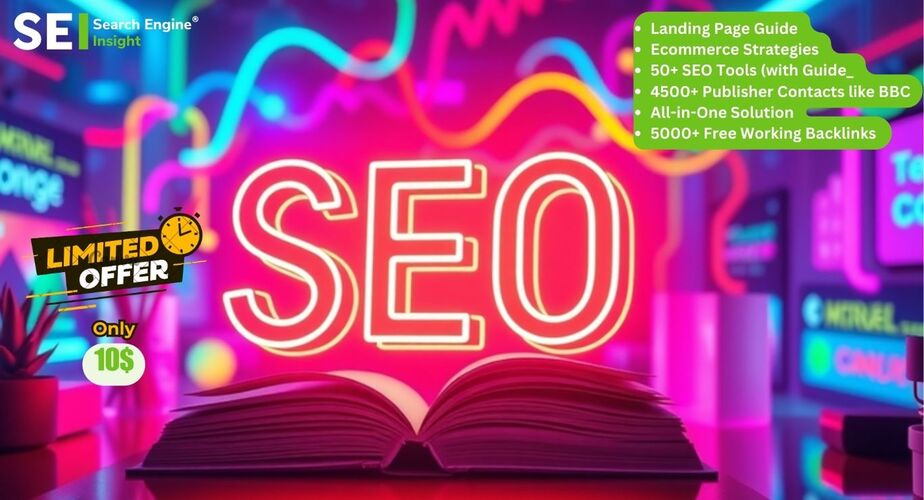From Law Firms to Fashion Brands: What SEO Looks Like Across Industries
Appearing high in search results is not achieved through the same playbook for every company. An attorney office chasing personal injury cases needs a totally different organic search strategy than a clothing label promoting new collections. What wins clicks, builds confidence, and drives sales in one niche may fall flat in another. Factors like article size, inbound link strength, and what counts as “helpful material” all shift based on who you are talking to.
In addition, some fields depend on deep-dive guides and expert standing. Others lean on eye-catching visuals, social chatter, or quick product rollouts. The ranking formula stays the same, but how each business competes does not. Grasping these contrasts lets you cut through the clutter and craft a plan that truly works.
Legal Services Need Trust Signals More Than Trends
Convincing someone to hand over their case requires more than flashy ads. For legal practices, earning credibility is crucial; short-lived traffic bumps mean little without markers like bar association references, clear service descriptions, and solid client feedback. People searching under stress want answers that feel reliable, so posts should speak to their worries directly while showcasing the firm as a confident guide. This is also why SEO for lawyers should include how-to articles, Q&A pages, and success story rundowns, all sprinkled with neighborhood keywords and formatted for featured answers.
Staying accurate, compliant, and respected all at once adds extra layers. Thin pages or stuffing keywords can hurt both placement and reputation. Instead, teams should focus on tidy site structure, rich snippet code for offerings, and steady updates to keep authority high. Link-building further favors top-tier sources, such as legal directories, press mentions, or university citations. The aim is not just to appear up top; it is to put minds at ease.
E-Commerce Brands Rely on Product Visibility and Speed
Showing an item in front of buyers means fine-tuning load times, site layout, and timing. Online shops must ensure pages pop up fast, categories make sense, and descriptions match buyer searches, not just buzzwords. Stores that refresh inventory feeds often and use crisp photos with proper tags tend to leave slower rivals behind.
Unlike service sites, retail platforms also thrive on seasonal pushes and spotting trends early. Blog posts, internal linking, and even title tags need frequent tweaks to match current searches. At the end of the day, it is less about being robotic and more about meeting shoppers at the exact moment they are curious.
Healthcare Providers Must Focus on Accuracy and Local Reach
Medical offices and clinics face strict rules that change how they share materials online. Precision is vital; search formulas flag health topics under “Your Money or Your Life,” so vague or wrong information can tank placements. This means care centers need vetted, reader-friendly write-ups from experts. Keyword plans should use terms patients type, not just doctor-only jargon.
Location-based ranking also makes a big difference here. People do not just search “dentist”; they look for one nearby, in-network, with strong ratings. Claiming and polishing a Google Business Profile, handling reviews, and crafting city-specific landing pages pulls in the right foot traffic. For practices juggling rules and rivals, it is about appearing early and appearing correctly.
Creative Industries Win with Visual Content and Consistency
Photographers and designers cannot depend on dense text to draw people in. Their edge comes from showcasing work in the clearest way. Visual-focused ranking relies on optimized image files, striking galleries, and layouts that keep visitors engaged. Tags, captions, and schema often weigh more than paragraphs in this space.
However, this does not completely sideline written pieces; it just changes the form. Behind-the-scenes stories, project breakdowns, and video clips can boost discoverability when paired with fitting phrases. Keeping profiles steady across platforms (linking YouTube or Instagram back to a polished site) also builds domain strength. Creators actually win by blending flair with function.
Real Estate SEO Is All About Location and Listings
Home seekers care less about your brand name and more about matching their dream neighborhood. Property professionals must zero in on precise spots; using terms like “three-bed townhouse in North Loop” instead of “homes for sale.” Every listing is a chance to target detailed queries and earn organic clicks.
Beyond active listings, agents gain from city guides, school roundups, and market snapshot posts that keep readers hooked between moves. This evergreen material also solidifies their image as local specialists, keeping them visible even when clients pause their search. Fresh sitemaps and structured data for properties further lets search systems know what is new, what is live, and where it sits.
B2B Companies Thrive on Educational Content and Authority
Selling to enterprises is not about quick wins; it is a marathon built on thought leadership. Business-to-business firms center ranking efforts on deep dives, smart linking, and long-form pages that guide decision makers through complex topics. Case studies, white papers, and niche blogs form the core, targeting specific queries over mass appeal.
Under-the-hood optimization also matters, especially for SaaS or large platforms. A clean layout, clear menus, and crawl-friendly code help both buyers and bots find resources. Since deals unfold over weeks or months, tying remarketing and email sequences to well-optimized pages turns casual readers into clients.
Restaurants and Hospitality Businesses Must Dominate Local Search
A corner cafe or boutique may not need the same global strategy, but they share one goal: appearing when someone nearby is ready to book or dine. Food and lodging spots thrive on mobile-first discoverability, live booking info, and integrated reviews. Being listed correctly on Google, Yelp, and reservation sites matters as much as your homepage.
Success often boils down to map listings, star badges, and quick answers to “Are they open now?” or “Do they offer gluten-free menus?” Structured data for menus, events, and pricing also boosts rich results. Add user-shared photos and check-ins, and you quickly build momentum before individuals even reach your website.
Endnote
No single search ranking formula suits every sector. What drives clicks for a style label might barely move the needle for an attorney office, and tactics that work in property might flop in B2B. Winning means knowing your field, your crowd, and how they search. When companies shape their visibility plan around their aims and audience habits, they do not just climb the charts; they fuel real growth.
Read More: What is mystalk?




